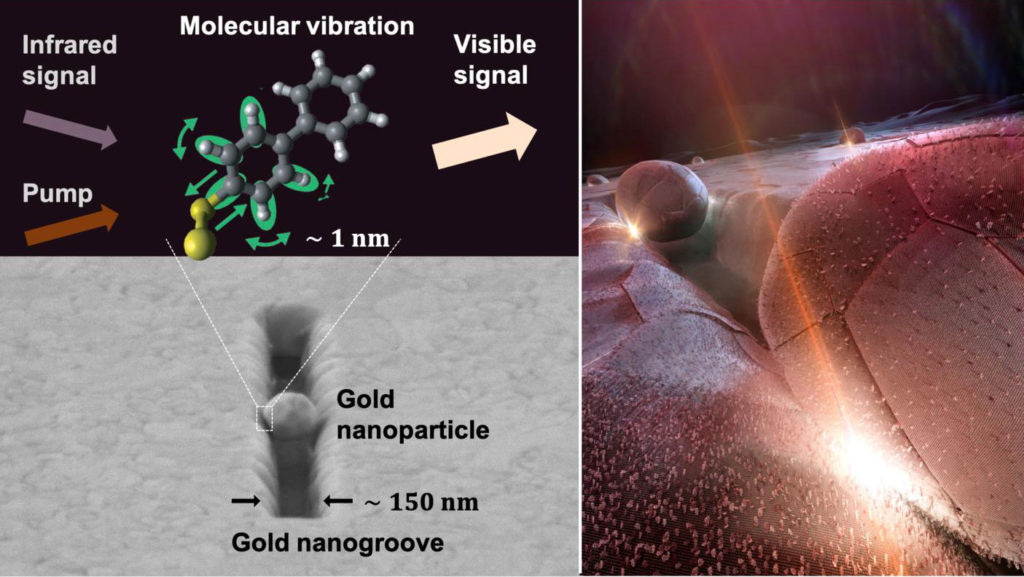Light is an electromagnetic wave consisting of oscillating electric and magnetic fields propagating through space. Every wave has its frequency, which refers to the number of oscillations per second, measured in Hertz (Hz). Our eyes can detect frequencies between the visible spectrum, 400 and 750 trillion Hz (or terahertz, THz). Light sensors in cell phone cameras can detect frequencies down to 300 THz, while optical fiber detectors used for internet connections are sensitive to around 200 THz.
At lower frequencies, the energy transported by light isn’t enough to trigger photoreceptors in our eyes and in many other sensors, which is a problem given that there is rich information available at frequencies below 100 THz, the mid-and far-infrared spectrum.
Scientists at EPFL, Wuhan Institute of Technology, the Valencia Polytechnic University, and AMOLF in the Netherlands have now developed a new way to detect infrared light by changing its frequency to visible light. The device can extend the “sight” of commonly available and highly sensitive detectors for visible light far into the infrared. The breakthrough is published in Science.

Frequency conversion is not an easy task. The frequency of light is a fundamental that cannot easily change by reflecting light on a surface or passing it through a material because of the law of energy conservation.
“The new device has a number of appealing features,” says Professor Christophe Galland at EPFL’s School of Basic Sciences, who led the study. “First, the conversion process is coherent, meaning that all information present in the original infrared light is faithfully mapped onto the newly created visible light. It allows high-resolution infrared spectroscopy to be performed with standard detectors like those found in cell-phone cameras. Second, each device is about a few micrometers in length and width, which means it can be incorporated into large pixel arrays. Finally, the method is highly versatile and can be adapted to different frequencies by simply choosing molecules with different vibrational modes.”
“So far, however, the device’s light-conversion efficiency is still very low,” cautions Dr. Wen Chen, first author of the work. “We are now focusing our efforts in further improving it” – a key step toward commercial applications.
Journal Reference
- Wen Chen, Philippe Roelli, Huatian Hu, Sachin Verlekar, Sakthi Priya Amirtharaj, Angela I. Barreda, Tobias J. Kippenberg, Miroslavna Kovylina, Ewold Verhagen, Alejandro Martínez, Christophe Galland. Continuous-Wave Frequency Upconversion with a Molecular Optomechanical Nanocavity. Science 03 December 2021, Vol 374, Issue 6572, pp. 1264-1267. DOI: 10.1126/science.abk3106
